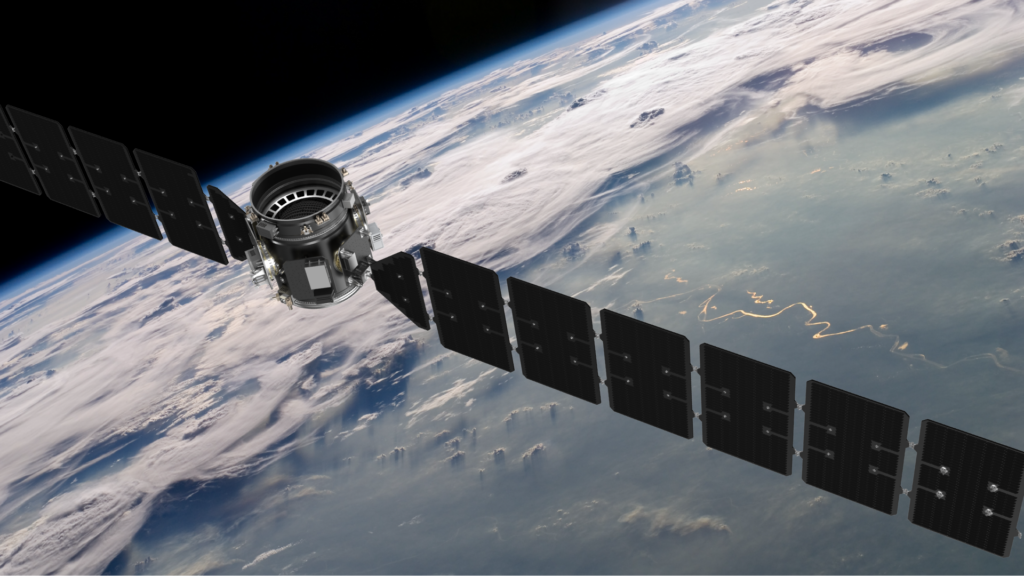The European Space Agency (ESA) will fund the RISE mission. Its goal is to demonstrate the possibility of servicing satellites in geostationary orbit.
Intelsat-901 geostationary satellite. The photo was taken by the MEV-1 space tug during docking. Source: Northrop Grumman
Modern satellites have reached such high reliability levels that the main reason for their outage is often not technical problems, but the depletion of the fuel needed to maintain their orbit. Stationary vehicles are particularly affected by this problem. They are much more expensive and have a much more complex design than traditional satellites. Their service life typically ranges from 15 to 20 years, after which they run out of fuel and their operators are forced to move to a decommissioned orbit (several hundred kilometers above geostationary orbit).
One solution to this problem is the creation of special service vehicles. They could refuel older satellites or be used as space tugs to keep satellites in the right orbit. Northrop Grumman has already demonstrated the feasibility of this concept by launching two MEV space tugs. They successfully docked with the vehicle in geostationary orbit and returned to their operational position.
Now ESA wants to join this effort. The agency recently signed a deal with D-Orbit worth €119 million. As part of this effort, we plan to build the space tug ship “RISE” and work on improving orbital maintenance technology. The mass of the vehicle is 3,000 kg, of which approximately 800 kg is used as fuel.
RISE draws space to the artist’s impression. Source: D-Orbit
RISE is scheduled to launch in 2028. After engineers verify that all the tug’s systems are working properly, the rocket will be sent into submerged orbit, where it will dock with the satellite and connect to the ring originally attached to the launch vehicle. You will then use the thrusters to change the altitude of your trajectory and demonstrate your ability to perform precise maneuvers.
RISE will then release the satellite again and move it into a parking orbit. It is located between buried orbit and geostationary orbit. After mission experts evaluate the experimental results, RISE will select life-extending satellites. The space tug docks with it and uses thrusters to hold its assigned position. The RISE mission is designed to last eight years, during which time one or more spacecraft will be operational. At the end of the service, the tug will be transported to burial orbit along with the client’s satellite.
We previously talked about Astroscale’s plans for a tugboat designed to remove space debris.
According to ESA



